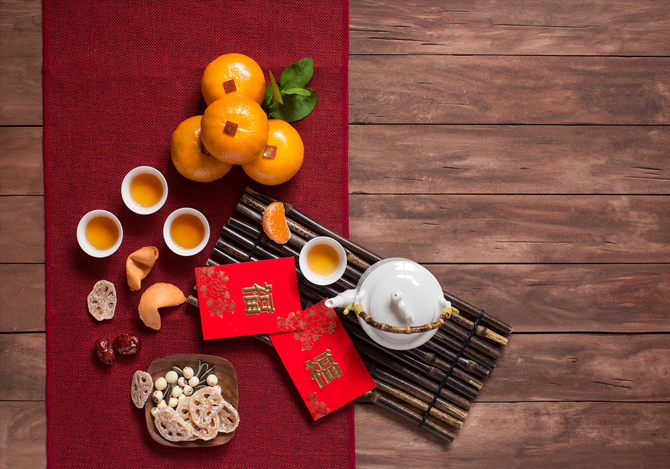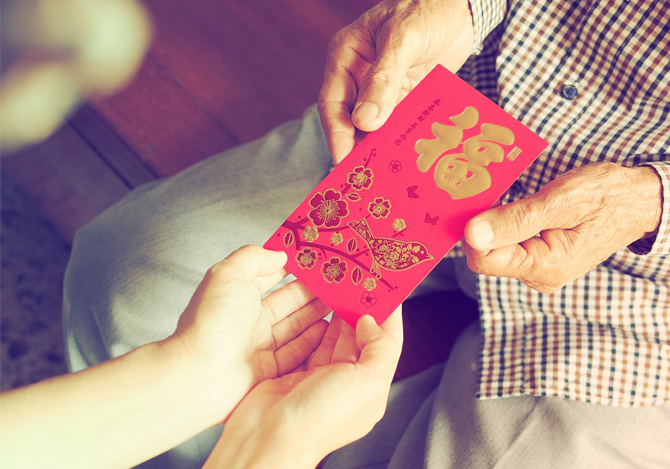Chinese New Year, or Spring festival, is the first day of the Chinese lunar calendar and is the most important holiday in the Chinese calendar. The 15-day celebration period is a time to wish for good fortune in the upcoming year, to gather with family and to worship ancestors. Though regional celebrations vary greatly, all include a range of special foods, traditions and the ushering in of the next sign of the 12-animal zodiac.
Three Movements in the festival
JAN 17TH LITTLE YEAR Preparations for the new year begin on January 17th 2020, and last until New Year' s Eve.
JAN 25TH – FEB 4TH SPRING FESTIVAL Chinese New Year officially begins on January 25th, 2020, and ends on February 4th.
FEB 5TH – 8TH LANTERN FESTIVAL Preparations begin the 5th, and the Lantern Festival is held on February 8th.


In the run up to Chinese New Year you are supposed to clean your house to get rid of the old and buy new clothes and shoes to bring in good fortune for the year ahead. You can also decorate your home with the colour red, with lucky plants (tangerines, narcissus) and symbols (red knots, couplets, door calligraphy). You are expected to clear all debts and many will make offerings to ancestors and deities.
During Chinese New Year bad spirits must be scared away and good spirits welcomed with firecrackers, fireworks and Dragon or Lion Dances. There will also be a range of special festive foods eaten at banquets and family gatherings. Blessings should be given in the form of money in lucky red packets (lai see) which are generally given to younger family members, but in Hong Kong are also given to unmarried people and those who are in less senior positions than you.
In countries that are predominantly Chinese, you will find the cities cleared during Chinese New Year as people head home to their family to celebrate. Festive red decorations will be everywhere. Many shops, restaurants and offices will be closed (some for only a few days).
Do
- Feel free to ask questions about traditions and customs that you observe
- Say “Kung Hei Fat Choi” (Cantonese) or “Gong Xi Fa Cai” (Mandarin)
- Put some sweets in the pantry office at work for staff
- Prepare some red packets (lai see) to distribute where appropriate
Don' t
- Wear dominantly white/black clothing
- Buy new shoes or cut your hair
- Lend or borrow anything
- Argue or cry in public

Lai See Customs & Traditions
It is Chinese custom to hand out Lai See (also called Hongbao or Red Packets) during Chinese New Year. These little envelopes are usually red for luck and contain money. It’s a time when kids can save money for something they truly want, and a time for adults to bless those younger or more junior than them with luck, happiness and good fortune. Whether you’re new to Hong Kong, or have been here a while, it’s sometimes difficult to know what is the best local practice. The tradition of Lai See giving is carried out by married individuals and elders as a symbol of well-wishing and to bring good luck to juniors and unmarried singles. However, because giving Lai See depends on hierarchy, it can also be handed out from “big to small”, “old to young”, and “senior to junior”. The amount of Lai See given is largely dependent on the closeness of the relationship between the giver and receiver.
Lai See Etiquette
Never give money in odd numbers (it’s associated with funerals). Start with $10 and work upwards in multiples of 10. Some people even choose to give two red packets at a time, so if you want to give $40, you could give two packets of $20 each. Never give coins. Most people prefer to give new banknotes, which is why you see long lines outside banks, starting two weeks before CNY. When giving, express your blessings and well wishes to the receiver. Don’t forget to give with both hands as this is regarded as a sign of courtesy. The right moment is normally when you arrive at a host’s place or greet someone, not while leaving. Never let children give out Lai See to older folk or service staff, as this is considered insulting. Just as while giving, receive your red packet (and teach your children to, as well) with both hands as a sign of courtesy. It is also impolite to open the envelope immediately to check the amount in front of the giver. If your little one has got Lai See from one of your friends and you plan to give her child one as well, wait for a moment, so it doesn’t look like an exchange.
How Much Lai See To Give?
As mentioned earlier, this is dependent on individual relationships as well as each family’s financial situation. Immediate family members are typically given the most generous red packet amounts, followed by close relatives and friends, then distant friends and children of acquaintances and so on. Also, when giving to children, it makes sense to give older children (who are responsible for their own savings, pocket money and spending) a higher amount than a child who wouldn’t know the difference between two numbers anyway! Give what you’re comfortable with. If you do want a range of what is appropriate and expected these are common amounts:
- Younger unmarried siblings200-1,000
- Your Own Children 100-500
- Cousins/Relatives 50-100
- Children of Friends 20-100
- Helpers 100-300
- Tutors 100
- Service Staff 50-100
- Misc 20
Lai See for Service Providers
Helpers and secretaries receive a larger amount as they are your immediate employees. It’s not uncommon to provide a token lai see to helpers of friends who often spend time with your children on playdates. For services you frequently use or go to, such as building staff (security guards, doormen, club staff, etc.), a token amount will do. You may choose to give a higher amount to someone who is dedicated to your building and less to those who are shared across the whole complex. It’s always good to carry spare red envelopes containing $20 in your bag, so you can hand them out to miscellaneous service staff like waiters, those who help you find cabs at hotels, etc. You can also give lai see to your child’s tutors (especially Mandarin tutors, as they are likely to give your child a red packet too). It isn’t required for school teachers, but you can always send in mandarins, pineapple tarts, or cookie tins.
What To Say
Last but not least, you should know what to say while giving or receiving Lai See. A generic blessing for anyone is Sun Tai Kin Hong (wishing good health). Of course, the most common blessing and greeting that you will hear throughout January is Kung Hei Fat Choy (good wishes, good fortune).
Source: "Lai See like a local" , from Sassy Mama



